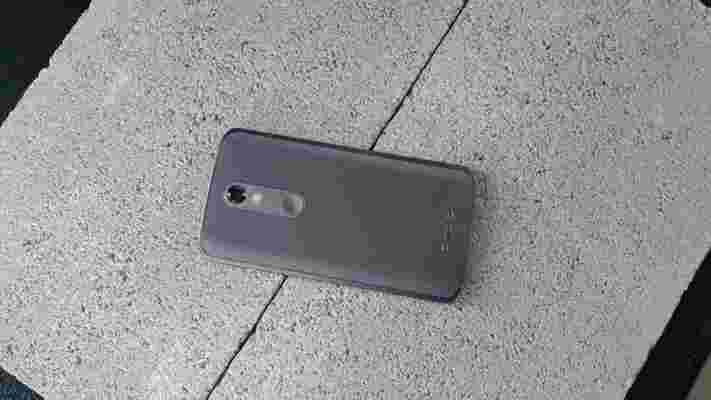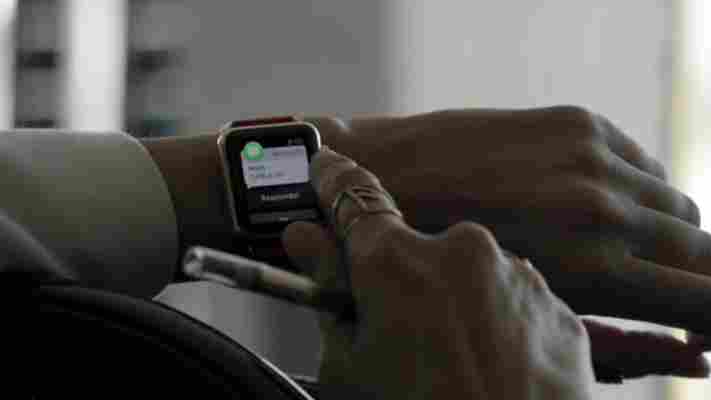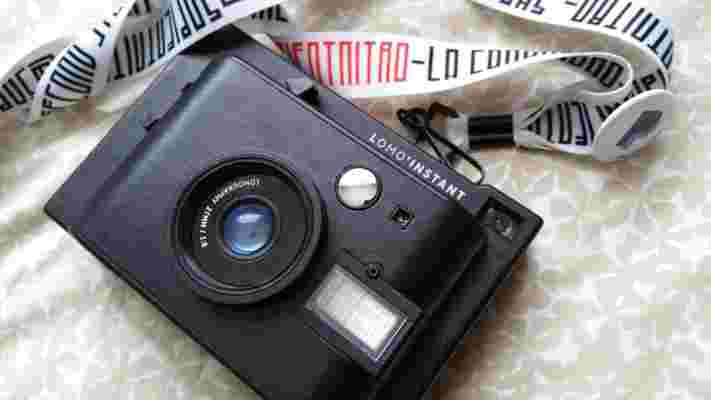Ready for another new Android phone this season? Well, you’re gonna get it anyway: Verizon today unveiled the Motorola Droid Turbo 2 with a damage-proof screen technology called “Turbo Shatter Shield.”

The design integrates multiple layers of material to help bend and absorb the shock to prevent the screen from cracking. Verizon was more than happy to put its phone through multiple drops on a concrete block to demonstrate its durability.
Spec wise, the phone has a 5.4-inch quad HD display, a 21-megapixel rear camera, a 5 MP selfie cam, and a 3,760 mAh battery rated up to 48 hours.
The exterior looks quite a bit like the new Moto X Pure Edition, with a curved, textured back that’s removable for access to SIM, MicroSD slots and changeable case colors. You can also customize the Droid Turbo 2 on Moto Maker.
Cool stuff, but why didn’t Motorola incorporate this into its own Moto X line? Motorola Corporate Vice President Jeff Miller tells us that because of its relationship with Verizon’s Droid line since 2009, it was important to continue innovating for the platform.
“The Droid line that our consumers have come to know is synonymous with strength and durability,” Miller said. “We’ll consider it overtime how we might apply the technology to our other devices – but for now, we think Droid smartphones are the most practical place for it.”
Miller also said that the phone has been tested in Motorola’s own Chicago headquarter, with specific labs to perform drop and tumble tests. “We dropped it on concrete, on its side, front, back… it took us some time to optimize the recipe that could withstand the shock without losing touch sensitivity.


“It’s not just the Shatter Shield screen – it’s the entire system of the phone that’s been engineered for this design.”
The Motorola Droid Turbo 2 will be available on Thursday October 29 with a limited time trade-in offer for up to $300 off the new device. Phones with cracked screens accepted.
Verizon was shy to state the full price, but did say that the 32GB and 64GB devices will be available for $26 and $30 a month respectively on a 24-month plan. Expect to pay around $624 and $720 out of pocket, assuming you don’t upgrade before the two year mark.
Apple Watch is coming to Best Buy on August 7: Not so exclusive anymore!
The Apple Watch started out as something you could only paw at the Apple Store or in a high-end department store, then order online. Now it’s coming to the rather more mundane surroundings of Best Buy.

The company didn’t want to talk specific Apple Watch sales numbers during the latest earnings call, but the arrival of the device in Best Buy’s US stores on August 7 will seriously up distribution.
Apple says it will be available in 300 stores by the “holiday shopping season” but will start with availability in 100 stores next month. Good news if you’ve been waiting to grab one.
I could go on with paragraph after paragraph of analysis about this move, but frankly, it’s just a first generation gadget getting more shelf space. That’s what happens when manufacturing catches up with demand and marketing kicks in.
➤ Best Buy [via TechCrunch ]
Read next : The Apple Watch is not a horse…no, really, stick with us here
Lomo’Instant is the toy instant camera to please advanced photographers
Walk into any Urban Outfitters in America and you’ll see an array of candy-colored film cameras designed to give hipsters an easy introduction to film photography without requiring any skills. But for those looking to get a little fancy with their instant camera work, Lomography wants to provide a camera that allows photo pros to experiment with all kinds of interesting effects, from double and long exposures to color filters and extra lens.

The Lomo’Instant , the company’s first instant camera, started out as a Kickstarter project that was met with overwhelming results. You can opt to buy the camera with three additional lens (fisheye, portrait and close-up) for $149 or the lone camera for $119 (but that doesn’t make much sense economically).
Lomography also released a new add-on lens recently called the Splitzer, which lets you split an image into two or more frames within a single photo. More on that below.
The Lomo’Instant features a fixed 27mm lens, an all-plastic body with a leather grip finish, and has a slot for you to clip on your favorite strap. The camera requires four AAA batteries to power the flash and takes Fujifilm Instax Mini film, both of which are not included in the box. Hey, no one said film photography was a cheap hobby.
To load the film, open the back of the Lomo’Instant and simply line up the yellow tab on the back of your film pack with what’s under the camera’s hood. Close it up, and switch on the power button located on the bottom of the camera. Hit the shutter at the top once to release the blank photo and you’re ready to go.
The Lomo’Instant has four settings: Flash On, Flash Off, or either of those with the long exposure setting turned on. If you get confused, the kit comes with flashcards that tell you exactly which setting to adjust to in order to achieve a certain effect.
If you want to try out multiple exposure shots, isuperimposing several images into one single photo, you can flip the switch to the MX sign. The camera lets you take as many exposures in one frame as your body is able, but the best results are between two to three shots.
The side level lets you adjust the lens slightly in and out to focus. You also get several different color gel strips to place in the flash slot if you want to try out different color filters.
The last button you should know is the bracketing wheel, which lets you set a range of -2 to +2 to add extra light or darkness into each photo.
One should know that despite all of the advance controls that come with this camera, instant photography is not meant to be ultra crisp. Lomography’s philosophy is about nostalgic, vintage photo quality that gives off a fun, dreamy feel.
I took the Lomo’Instant with me to SXSW to test on an outing at a nearby national park in Austin. It was a cloudy day, but I didn’t find the need to use flash.
Framing the image is quite easy and once you hit the shutter, the photo prints quickly (provided you did not turn MX on). You’ll want to be careful not to hold your hand over the left-side where the photo comes out, however.
To use the different lenses provided, just twist to screw them on and you’re ready to go. Here’s a shot I took of a small waterfall using a fisheye lens.
Getting used to all the controls definitely take some adjusting. You’ll likely waste about three to four shots just to get exposure settings right, especially if you’re attempting multiple or long exposure shots.
For example, I tried using double exposure mode to superimpose my face with my brother’s face using the Splitzer lens, resulting in total failure. Unless you have a tripod and mark exactly where everyone should stand to get that perfect composition, it will take a lot of experimenting.
The Lomo’Instant also has a small mirror in front for you to attempt to take selfies, but I always found that my arm is not long enough to get the camera far enough away from my face to achieve a, well, flattering angle.
Using the gel colors was also fun, but this worked best in bright settings and using flash on top to truly get the color filter to come through. In darker spots, deeper colors like red or blue will make the image print way too dark, unless, of course, that was the look you were going for.
Overall, the Lomo’Instant is an incredibly fun camera to use for photographers who want a little extra control their instant photography. It’s got the most advance set of tools found on an instant camera, and the unpredictability of outcomes is what keeps the concept exciting and mysterious.
Again, film photography isn’t a cheap hobby. A double pack of 10 Instax Mini films can run you about $15, and with the kind of learning curve that comes with a camera like this, you’ll need to accept throwing a few bucks down the drain getting accustomed to new settings.
One thing I wish the Lomo’Instant had is a timer feature. This would make long exposures more interesting, and allow you to take real selfies or group photos with a tripod without sticking your arm out, MySpace-style (or, gulp, empowering the selfie stick).
At $149 for the kit with three lens, the Lomo’Instant is a fun buy for friends, camera newbies or enthusiasts alike, and those who enjoy capturing moments into physical imagery you can hold on to or pass along to friends. And perhaps that’s worth the extra price, as you can’t put a dollar amount on memories.
Read next: Fujifilm Instax 90 reminds you that memories are not disposable
